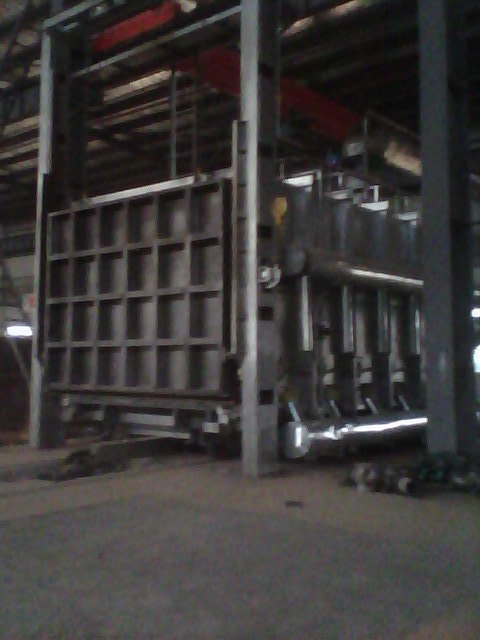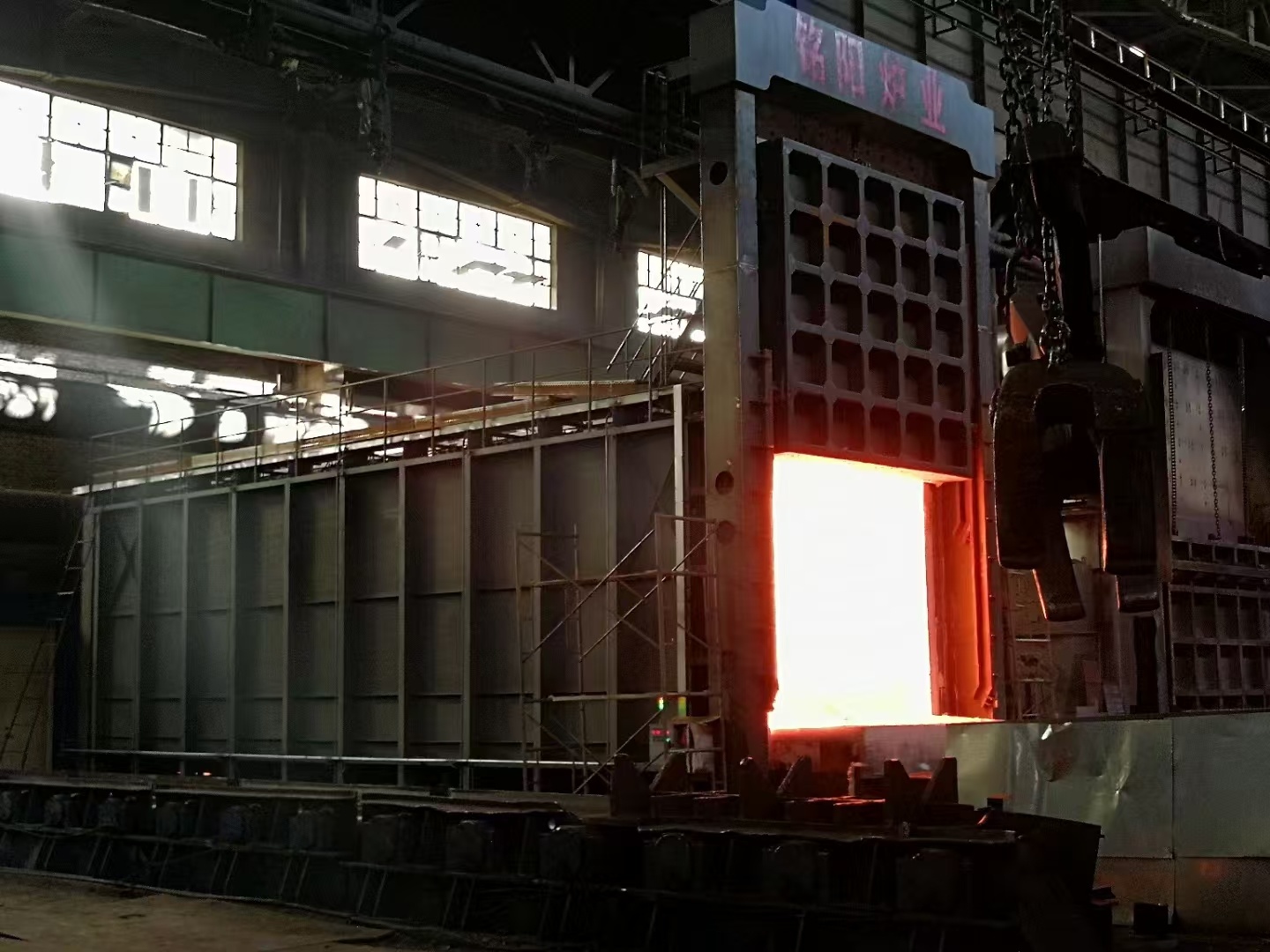


Top Features to Look For in a Shipbuilding Heat Treatment Furnace
Top Features to Look For in a Shipbuilding Heat Treatment Furnace
Introduction to Heat Treatment in Shipbuilding
In the realm of shipbuilding, **heat treatment** plays a critical role in enhancing the mechanical properties and durability of metal components. This process involves heating materials to a specific temperature and then cooling them to achieve desired characteristics such as increased
Top Features to Look For in a Shipbuilding Heat Treatment Furnace
Introduction to Heat Treatment in Shipbuilding
In the realm of shipbuilding, **heat treatment** plays a critical role in enhancing the mechanical properties and durability of metal components. This process involves heating materials to a specific temperature and then cooling them to achieve desired characteristics such as increased strength, improved ductility, and reduced brittleness. The **heat treatment furnace** is integral to this process, and selecting the right one is vital for ensuring the quality and longevity of ship components.
Understanding Heat Treatment Furnaces
Heat treatment furnaces come in various forms, each designed to meet specific manufacturing needs. For shipbuilding, the focus is on furnaces that can handle large components and operate with precision. Key types include:
1. Batch Furnaces
Batch furnaces are commonly used for treating multiple components at once, making them suitable for large-scale shipbuilding operations. They offer flexibility in processing different materials and sizes, which is crucial in a diverse manufacturing environment.
2. Continuous Furnaces
Continuous furnaces allow for the uninterrupted processing of materials, providing efficiency for high-volume production. These furnaces maintain consistent temperatures throughout the treatment process, ensuring uniform results.
3. Induction Furnaces
Induction furnaces use electromagnetic fields to heat materials directly, offering precise temperature control and faster heating times. This technology is particularly beneficial for specific ship components that require strict adherence to heat treatment specifications.
Key Features to Consider When Choosing a Heat Treatment Furnace
When evaluating a heat treatment furnace for shipbuilding, several features should be prioritized to ensure optimal performance and efficiency. Here’s a detailed look at these critical aspects:
1. Temperature Control and Uniformity
**Accurate temperature control** is paramount in heat treatment processes. Look for furnaces equipped with advanced control systems that allow for precise adjustments and maintain temperature uniformity throughout the chamber. This feature is vital for achieving consistent results across all components.
2. Energy Efficiency
In today’s environmentally conscious world, energy efficiency is a crucial factor. Opt for furnaces that utilize **insulation technologies** and **energy-efficient heating methods**. This not only reduces operational costs but also minimizes the environmental impact of your manufacturing processes.
3. Chamber Size and Design
The design and size of the furnace chamber should accommodate the specific dimensions of the components being treated. A spacious chamber allows for **flexibility in processing larger parts**, which is often necessary in shipbuilding. Additionally, the configuration should facilitate easy loading and unloading to enhance workflow efficiency.
4. Heating Methods
Different heating methods—such as electric, gas, or induction—offer unique benefits. Evaluate which method aligns best with your production needs:
- **Electric Furnaces**: Provide precise temperature control and are often preferred for their cleanliness and efficiency.
- **Gas Furnaces**: Offer rapid heating times but require robust ventilation systems to manage emissions.
- **Induction Heating**: Delivers targeted heating, reducing the risk of overheating and improving energy efficiency.
5. Automation and Control Systems
Modern heat treatment furnaces often feature **automated control systems** that enhance precision and reduce the likelihood of human error. Look for furnaces equipped with advanced monitoring and data logging capabilities to facilitate process optimization and troubleshooting.
6. Safety Features
Safety should never be compromised. Ensure the furnace is equipped with necessary safety features such as temperature alarms, emergency shut-off systems, and robust construction to withstand high operational demands.
7. Maintenance and Support
Evaluate the maintenance requirements of the furnace. A design that allows for easy access to critical components can simplify routine inspections and repairs, minimizing downtime. Additionally, consider the manufacturer's support services, including warranties and availability of replacement parts.
8. Compliance with Industry Standards
Adherence to industry standards and certifications is essential for ensuring that the heat treatment furnace meets safety and performance requirements. Verify that the chosen furnace complies with relevant regulations, such as ISO standards for manufacturing processes.
Advantages of Investing in a High-Quality Heat Treatment Furnace
Choosing the right heat treatment furnace can significantly impact the quality of ship components. Here are some advantages that come with investing in a high-quality furnace:
1. Enhanced Material Properties
The primary goal of heat treatment is to enhance the mechanical properties of metals. An efficient furnace ensures that components achieve the necessary hardness, strength, and toughness, leading to improved performance in maritime applications.
2. Increased Production Efficiency
Furnaces designed with automation and energy efficiency in mind lead to faster turnaround times and reduced operational costs. This efficiency is crucial in a competitive industry where timing can influence profitability.
3. Consistency and Reliability
A furnace that offers uniform heating and precise control results in consistent product quality. This reliability builds trust with clients and contributes to a strong reputation in the shipbuilding industry.
FAQs about Shipbuilding Heat Treatment Furnaces
1. What types of materials can be treated in a heat treatment furnace for shipbuilding?
Heat treatment furnaces can be used for various metals, including steel, aluminum, and titanium, which are commonly utilized in shipbuilding.
2. How does temperature affect the heat treatment process?
Temperature plays a crucial role in the heat treatment process. Different materials require specific temperature ranges to achieve the desired mechanical properties effectively.
3. What maintenance is required for heat treatment furnaces?
Regular maintenance includes checking insulation integrity, calibrating temperature controls, and cleaning heating elements to ensure optimal performance.
4. Can heat treatment furnaces be customized for specific applications?
Yes, many manufacturers offer customization options to tailor furnaces to specific production needs, including chamber size and heating methods.
5. What is the typical lifespan of a heat treatment furnace?
The lifespan of a heat treatment furnace varies based on usage, maintenance, and quality, but they typically last between 10 to 20 years with proper care.
Conclusion
Selecting the right heat treatment furnace for shipbuilding is a decision that can significantly impact production quality, efficiency, and overall success. By focusing on key features such as temperature control, energy efficiency, and safety, manufacturers can ensure they invest in a furnace that meets the rigorous demands of the industry. Understanding these aspects not only aids in making informed purchasing decisions but also helps in optimizing manufacturing processes, ultimately leading to superior ship components.


